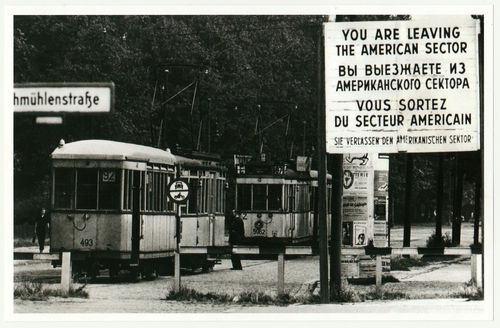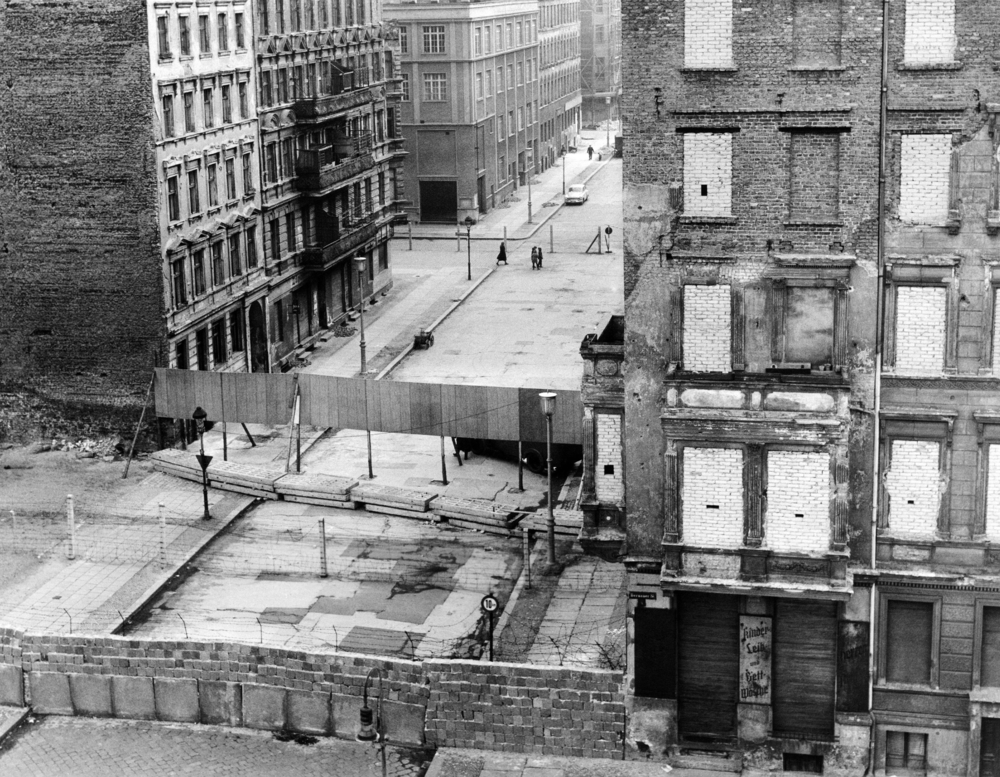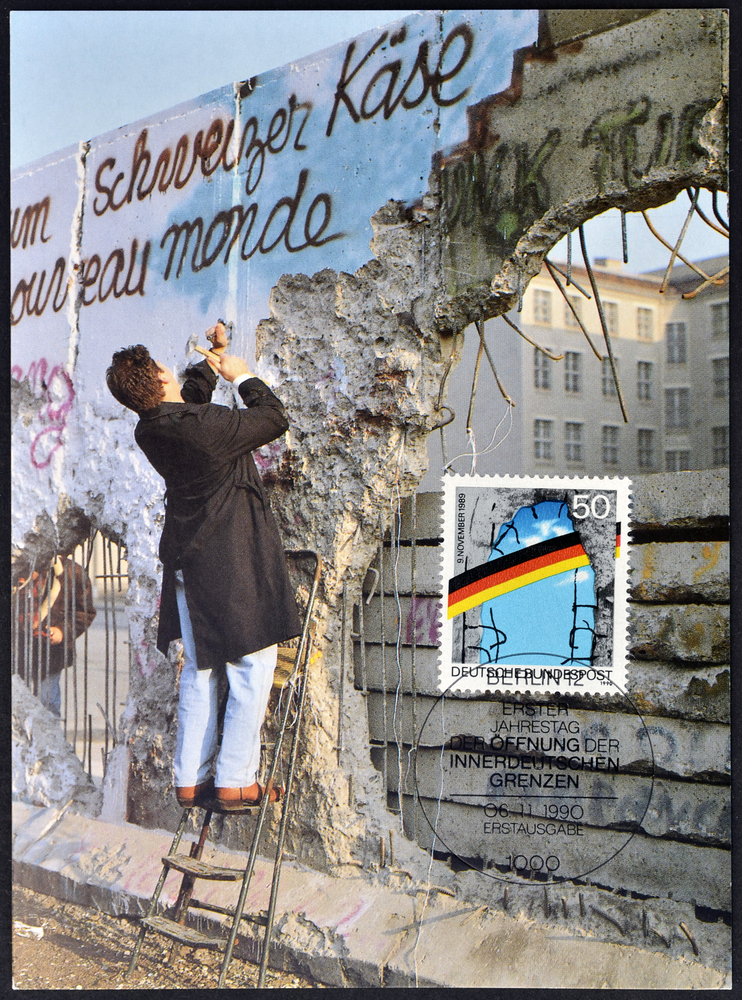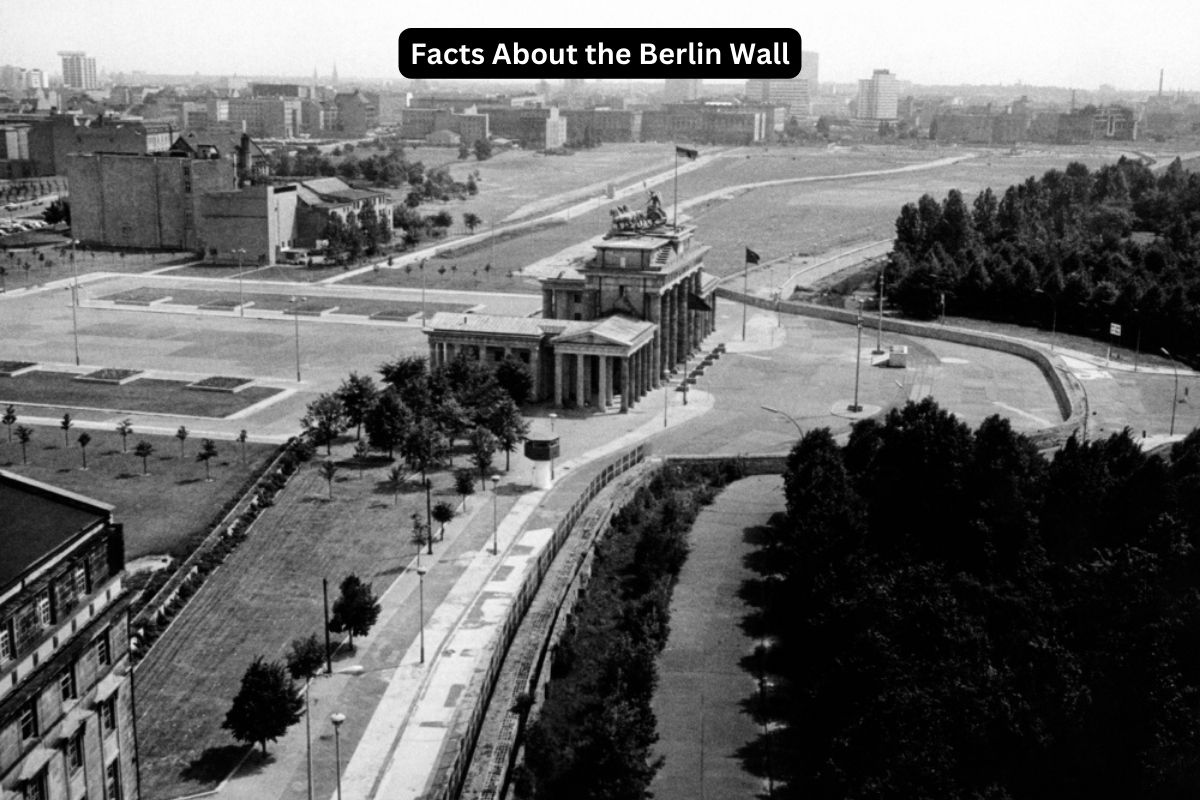In the tumultuous landscape of the Cold War, few structures held as much significance as the Berlin Wall. Erected in 1961 by East Germany, it became both a physical barrier and a potent symbol of the ideological divide between East and West.
This article delves into the multifaceted history of the Berlin Wall, exploring its construction, the daring escape attempts, and the pivotal moment of its fall in 1989.
We’ll also examine its enduring legacy, from the preservation of memorial sites to its global impact on international relations.
Join us on a journey through one of the most iconic symbols of the 20th century, where division gave way to unity, and oppression was overcome by the human spirit’s quest for freedom.
Berlin Wall Facts
1. Construction: Built in August 1961 by East Germany
The Berlin Wall was erected by the German Democratic Republic (East Germany) in August 1961 as a physical barrier separating East Berlin from West Berlin.
Also Read: Timeline of the Berlin Wall
This barrier was a response to the massive exodus of East Germans to the more prosperous West Berlin, which created a significant brain drain and economic strain on the Eastern Bloc.
The construction of the wall was a sudden and dramatic event, initiated without warning and quickly completed within a matter of days.

2. Symbol: Represented Cold War division
The Berlin Wall quickly became an iconic symbol of the Cold War division between the communist Eastern Bloc and the democratic Western Bloc. It represented not only the physical separation of a city but also the ideological divide between communism and capitalism.
The wall came to epitomize the oppressive nature of authoritarian regimes, as well as the desire for freedom and reunification among the German people.
3. Length: About 155 kilometers (96 miles)
The Berlin Wall, stretching approximately 155 kilometers (96 miles) throughout Berlin, served as a physical manifestation of the ideological rift between East and West.
This formidable structure, composed of concrete barriers and guard towers, not only divided the city geographically but also symbolized the broader divide between communism and democracy during the Cold War era.
Also Read: Facts About the Cold War
Its imposing presence loomed large over the lives of those on both sides, representing the struggle for freedom and the yearning for reunification among the German people.
4. Structure: Consisted of concrete walls, guard towers, and “death strip”
The Berlin Wall comprised concrete barriers, guard towers, and a wide “death strip” that included trenches, barbed wire, and other obstacles.
The main structure consisted of two parallel walls, with the space between them serving as a heavily fortified no-man’s-land patrolled by armed guards.
Additionally, barriers were erected along the outskirts of West Berlin to prevent escape attempts from the surrounding East German countryside. This extensive structure made the Berlin Wall one of the most notorious and heavily fortified borders in history.

5. Escape Attempts: Many tried to cross, resulting in deaths
Despite the formidable obstacles and the risk of severe consequences, many East Germans attempted daring escapes across the Berlin Wall.
Some tried to climb over the wall using ladders, ropes, or homemade grappling hooks, while others attempted to tunnel beneath it. There were also more creative attempts, such as using hot air balloons, zip lines, or even hidden compartments in vehicles.
However, escape attempts were extremely dangerous, and many ended tragically. Border guards were under strict orders to shoot anyone attempting to cross the wall illegally, leading to numerous fatalities.
The exact number of people who died while trying to escape across the Berlin Wall is uncertain, but estimates range from several hundred to over a thousand.
6. Fall: November 9, 1989, following peaceful protests
The fall of the Berlin Wall on November 9, 1989, was a momentous event that took the world by surprise. It came amidst a wave of political change in Eastern Europe, with mass protests and demands for democratic reforms.
The pivotal moment came during a press conference when an East German government official mistakenly announced that travel restrictions between East and West Germany would be lifted. Thousands of East Berliners flocked to the border checkpoints, overwhelming the border guards, who eventually opened the gates.
Throngs of jubilant East and West Berliners celebrated together, tearing down sections of the wall with hammers and pickaxes. The fall of the Berlin Wall symbolized the end of the Cold War division and marked the beginning of the reunification process for Germany.

7. Reunification: Germany reunified on October 3, 1990
Following the fall of the Berlin Wall, the process of reunification between East and West Germany accelerated rapidly.
Negotiations between East and West German leaders, along with international actors, led to the signing of the Treaty on the Final Settlement with Respect to Germany in September 1990.
This treaty paved the way for the official reunification of Germany on October 3, 1990, when the German Democratic Republic ceased to exist, and its territory was absorbed into the Federal Republic of Germany.
The reunification of Germany was a momentous and joyous occasion for the German people, symbolizing the end of decades of division and the beginning of a new era of unity, democracy, and prosperity.
8. Memorial Sites: Various sites in Berlin commemorate its history
In the wake of reunification, several memorial sites were established in Berlin to commemorate the history of the Berlin Wall and honor those affected by its presence. Among these sites is the Berlin Wall Memorial, located near the former border crossing at Bernauer Strasse.
This memorial includes a preserved section of the wall, as well as exhibits detailing the history of the division and stories of those who lived through it. Another prominent site is the East Side Gallery, which features a long stretch of the wall adorned with colorful murals painted by artists from around the world.
Additionally, the Checkpoint Charlie Museum provides insight into the methods used by East Germans to escape to the West and documents the stories of those who succeeded.
9. Destruction: Demolished after reunification; some sections preserved
Following reunification, much of the Berlin Wall was demolished as a symbol of the reunified Germany’s rejection of division and oppression. However, some sections of the wall were preserved as memorials to serve as a reminder of the city’s tumultuous past.
The process of dismantling the wall began shortly after reunification, with ordinary citizens and demolition crews tearing down sections of the concrete barrier.
Many segments of the wall were chipped away by souvenir hunters, while others were officially removed and sold or donated to institutions around the world. Today, only a few remaining sections of the wall stand as reminders of its once-imposing presence.
10. Legacy: Symbolizes struggle for freedom; marked end of Cold War
The legacy of the Berlin Wall is profound and enduring. It serves as a potent symbol of the divisions wrought by the Cold War and the struggle for freedom and human rights. The fall of the wall on November 9, 1989, is celebrated as a triumph of democracy and peaceful resistance, demonstrating the power of ordinary people to effect change.
The collapse of the wall inspired hope for democratic change in other communist countries in Eastern Europe, leading to the peaceful revolutions that brought down authoritarian regimes in countries such as Poland, Hungary, Czechoslovakia, and Romania.
The events of 1989 also contributed to the dissolution of the Soviet Union in 1991, marking the end of the decades-long struggle between communism and capitalism.
The dismantling of the Berlin Wall paved the way for the reunification of Germany and the end of the Cold War era, reshaping the geopolitical landscape of Europe and inspiring hope for democratic change around the world.
Today, the Berlin Wall stands as a powerful reminder of the importance of vigilance in defending freedom and democracy and the enduring human desire for unity and reconciliation.
